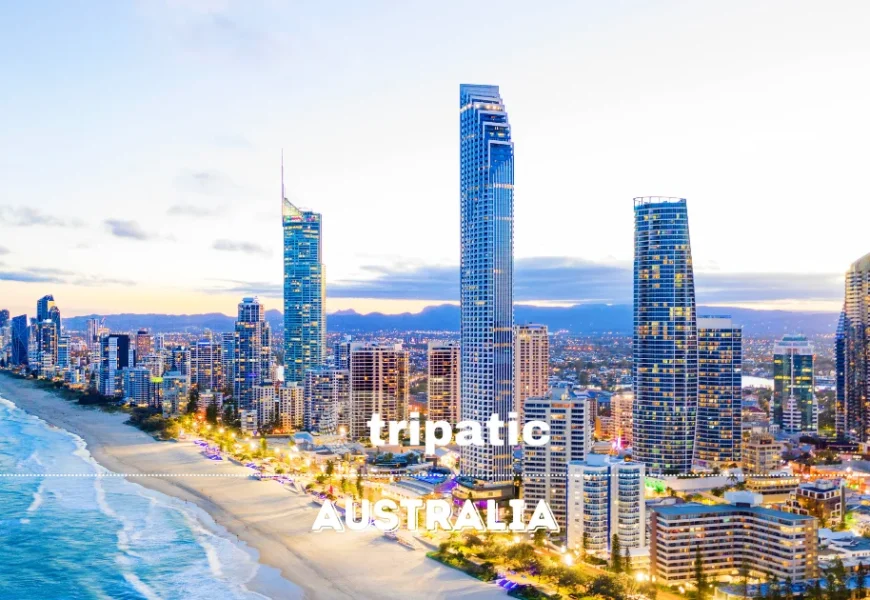Australia is a land of vast landscapes, rich history, unique wildlife, and vibrant cities. Whether you’re a beach lover, nature enthusiast, or a city explorer, Australia travel offers something for everyone. This diverse country is a dream destination for adventurers, offering thrilling experiences from the Outback to the Great Barrier Reef.
In this guide, we’ll dive deep into the must-see places, the best time to visit, travel tips, and how to make the most out of your Australian vacation.
1. Why Australia?
Australia’s appeal lies in its diverse ecosystems and unique geography. It’s the only country that’s also a continent, meaning you’ll experience a range of climates and landscapes as you explore. From the tropical north to the temperate south, Australia travel guarantees a combination of awe-inspiring natural beauty and cultural richness.
Unique Wildlife
Australia is home to some of the world’s most unique wildlife. Kangaroos, koalas, wombats, and the elusive platypus are animals you won’t find anywhere else in the wild. A trip to Australia isn’t complete without encountering some of these animals, and fortunately, there are countless sanctuaries and wildlife reserves across the country where you can do just that.
Breathtaking Beaches
Australia boasts some of the best beaches on the planet. From the famous Bondi Beach in Sydney to the remote stretches of sand in Western Australia, the beaches here are perfect for both relaxation and adventure. Surfing is a major part of Australian culture, and many visitors find themselves trying out this iconic sport for the first time on Australia’s waves.
Cultural Richness
Australia’s cities are modern and dynamic, yet they carry a deep connection to the past. Aboriginal culture, which dates back over 65,000 years, is still very much alive today. Travelers can visit ancient rock art sites, attend cultural festivals, and learn about the Dreamtime – the Aboriginal understanding of the world and its creation. Cities like Sydney, Melbourne, and Brisbane also offer thriving arts scenes, world-class museums, and gourmet dining experiences.
2. Must-Visit Destinations in Australia
Australia’s vastness can make it hard to choose where to go, but these are some of the top destinations every traveler should consider.
Sydney
Sydney, Australia’s largest city, is famous for its iconic landmarks, such as the Sydney Opera House and the Sydney Harbour Bridge. Take a walk through the Royal Botanic Garden, explore The Rocks neighborhood, or catch a ferry to Manly Beach. Bondi Beach is also a short drive away, and it’s the perfect spot to experience Australian beach culture.
Sydney also offers a great mix of urban and outdoor activities. If you’re into hiking, head to the Blue Mountains just outside the city. You’ll be rewarded with stunning views, waterfalls, and eucalyptus forests.
The Great Barrier Reef
Located off the coast of Queensland, the Great Barrier Reef is one of the most famous natural wonders in the world. This UNESCO World Heritage site stretches for over 1,400 miles and is home to an incredible variety of marine life. Snorkeling and scuba diving are the best ways to experience the reef, allowing travelers to get up close with coral gardens, colorful fish, and even sea turtles.
If diving isn’t your thing, you can take a glass-bottom boat tour or stay on one of the nearby islands like Hamilton Island or Whitsundays for a more relaxed beach experience.
Uluru (Ayers Rock)
Uluru is one of Australia’s most recognizable landmarks, and it holds great spiritual significance to the Aboriginal people. This massive sandstone monolith is located in the heart of the Northern Territory, and it’s an incredible place to learn about Aboriginal culture and traditions. Watching the sunrise or sunset over Uluru is an unforgettable experience, as the rock seems to change colors with the shifting light.
Many visitors also take part in cultural tours led by local Aboriginal guides to gain a deeper understanding of the area’s history and importance.
Melbourne
Known for its vibrant arts scene and coffee culture, Melbourne is often considered Australia’s cultural capital. The city is packed with galleries, street art, and music venues. Don’t miss the famous laneways filled with unique cafes and boutiques.
Melbourne is also the gateway to the Great Ocean Road, one of the world’s most scenic coastal drives. The 12 Apostles, a series of limestone stacks rising from the ocean, is one of the highlights of the drive.
Tasmania
For nature lovers, Tasmania is a hidden gem. This island state offers some of the most pristine wilderness in the country, with national parks, rugged coastlines, and abundant wildlife. Visitors can hike through Cradle Mountain-Lake St. Clair National Park or explore the stunning beaches of the Freycinet Peninsula.
Tasmania also has a burgeoning food and wine scene, with fresh seafood, gourmet cheese, and local wines.
3. When to Visit Australia
The best time for Australia travel depends on which regions you plan to visit, as the country experiences a wide range of climates.
- Summer (December to February): This is the peak tourist season in Australia, especially in southern cities like Sydney and Melbourne. The weather is warm and perfect for beach activities, but it can be quite hot in the Outback and tropical north.
- Autumn (March to May): A great time to visit most regions, with cooler temperatures and fewer crowds. This is also a popular time for food and wine festivals.
- Winter (June to August): The southern parts of Australia can get quite chilly, but the northern regions, like Queensland and the Great Barrier Reef, have pleasant weather during this time. It’s also a great time for skiing in the Snowy Mountains.
- Spring (September to November): Like autumn, spring offers mild weather and fewer tourists. It’s an excellent time for hiking and outdoor activities.
4. Travel Tips for Australia
- Visas: Most travelers will need a visa to enter Australia. Make sure to apply online in advance.
- Getting Around: Australia is a vast country, so flying between cities is often the quickest option. However, for shorter trips, renting a car or taking a train can be a great way to see more of the landscape.
- Wildlife Safety: While Australia’s wildlife is fascinating, it’s important to stay safe. Be mindful of signs about jellyfish or crocodiles when swimming in the north, and avoid getting too close to animals like kangaroos or dingoes in the wild.
- Currency: The currency in Australia is the Australian Dollar (AUD), and credit cards are widely accepted.
5. Conclusion: Why You Should Plan Your Australia Travel Today
Australia travel offers a unique blend of natural wonders, cultural experiences, and adventure. Whether you’re diving the Great Barrier Reef, exploring the Outback, or sipping coffee in Melbourne’s laneways, you’ll find endless ways to immerse yourself in this diverse country.















